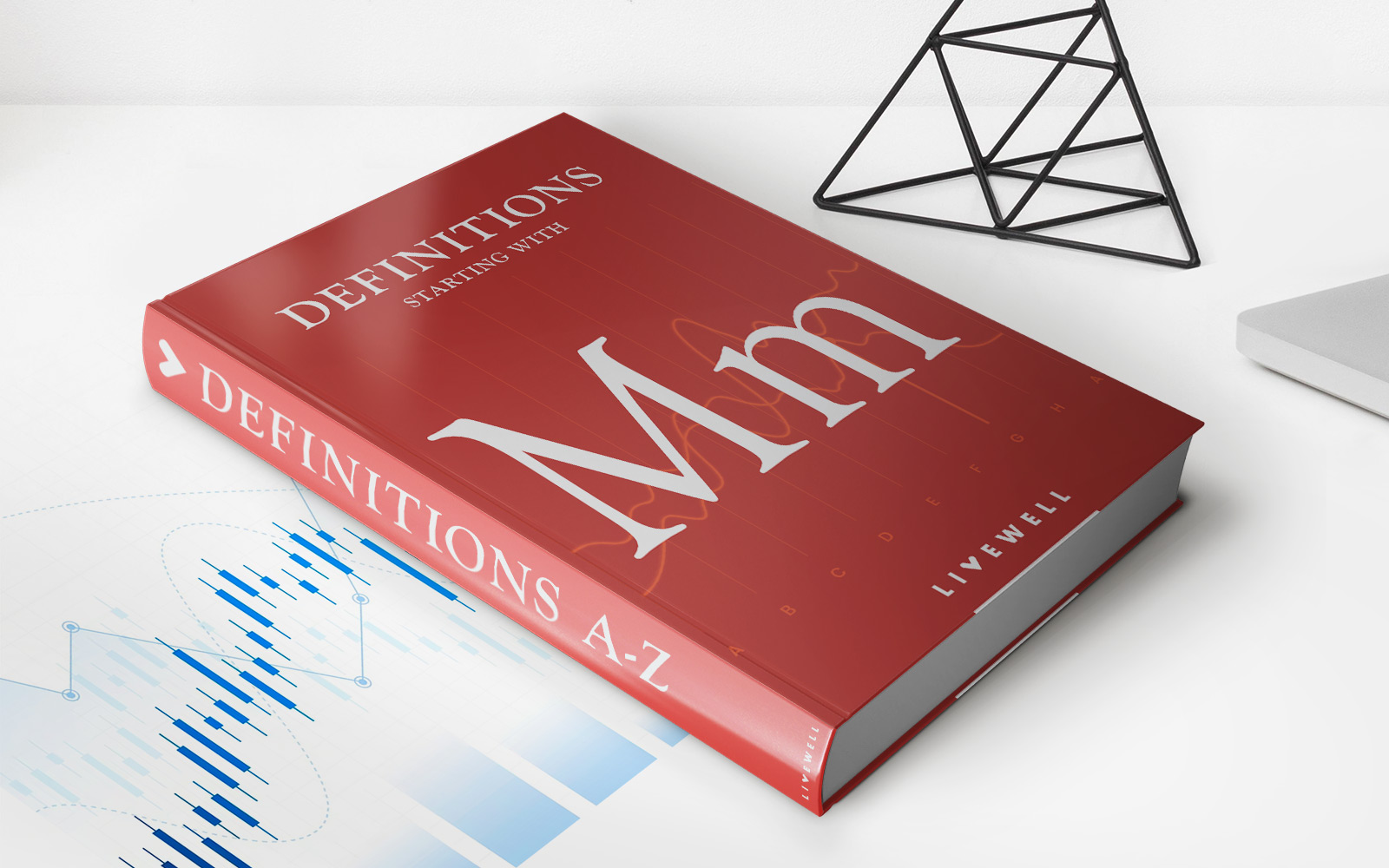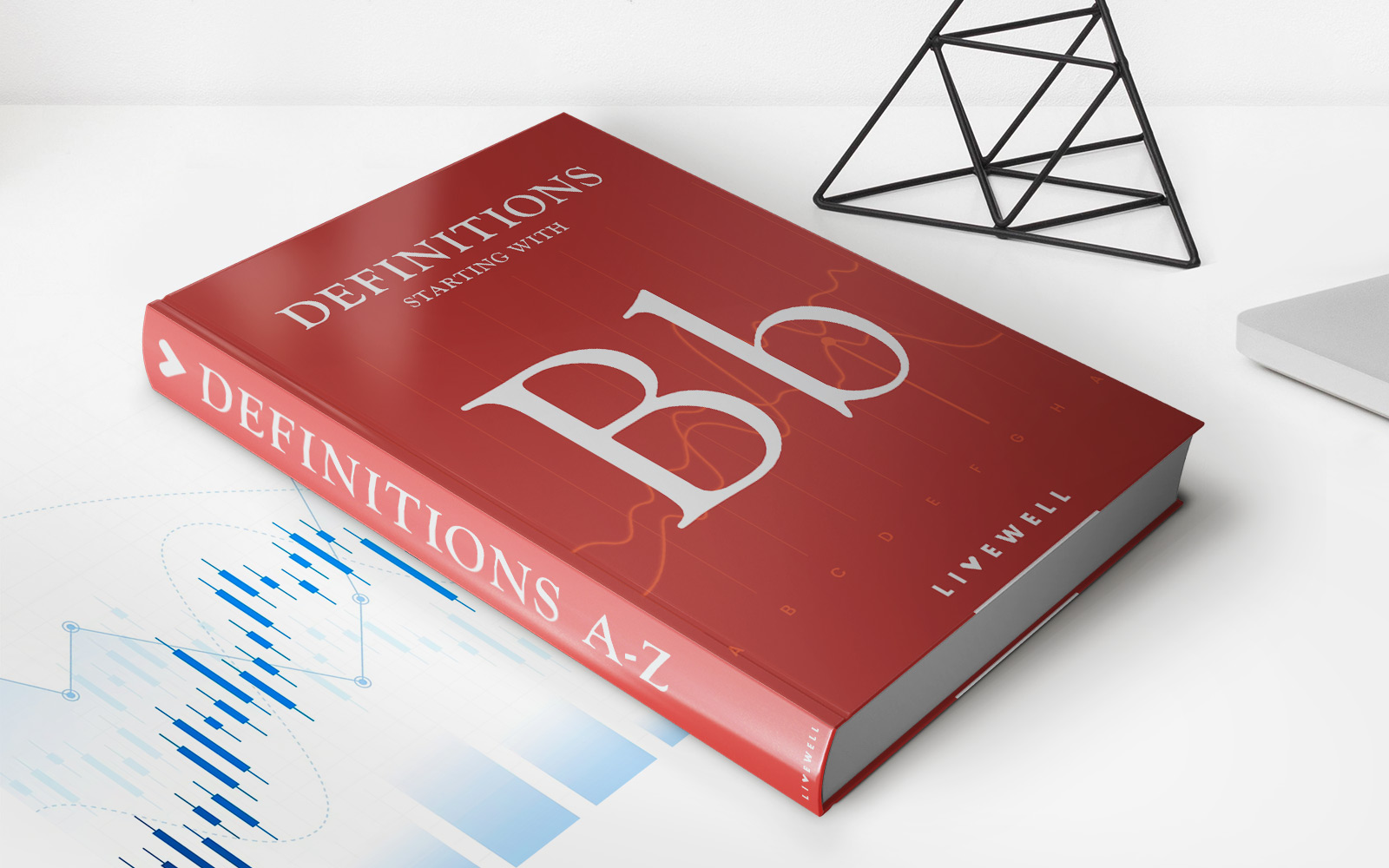

Finance
How Do Pensions Work In Divorce?
Published: January 22, 2024
Learn how pensions are handled in divorce settlements and get expert financial advice. Understand the impact on your finances with our comprehensive guide.
(Many of the links in this article redirect to a specific reviewed product. Your purchase of these products through affiliate links helps to generate commission for LiveWell, at no extra cost. Learn more)
Table of Contents
Introduction
Divorce is a complex and emotionally challenging process that involves the division of assets, including pensions. Pensions are often one of the most valuable assets in a marriage, and understanding how they work in the context of divorce is essential for ensuring a fair and equitable settlement. In this article, we will delve into the intricacies of pensions in divorce, exploring the various types of pension arrangements, valuation methods, and the legal mechanisms involved in dividing pensions between divorcing spouses.
Pensions are long-term savings plans designed to provide individuals with an income in retirement. They are typically accrued during the course of a marriage and are considered a marital asset subject to division upon divorce. The treatment of pensions in divorce can have significant financial implications for both parties, making it crucial to have a clear understanding of the relevant processes and considerations.
Throughout this article, we will explore the different approaches to handling pensions in divorce, including pension sharing orders, pension offsetting, and pension attachment orders. We will also discuss the challenges and considerations that arise when dealing with pensions in the context of divorce, such as tax implications, the impact of pension freedoms, and the potential complexities of valuing different types of pension arrangements.
By gaining insight into the workings of pensions in divorce, individuals navigating the divorce process can make informed decisions and seek appropriate professional guidance to ensure a fair and equitable resolution. Whether you are considering divorce, in the midst of the process, or providing support to someone going through a divorce, this article aims to provide valuable clarity and guidance on the complexities of pensions in the context of marital dissolution.
Understanding Pensions
Before delving into the intricacies of pensions in divorce, it is essential to have a solid understanding of what pensions entail. A pension is a long-term savings plan designed to provide individuals with a source of income during their retirement years. It serves as a financial safety net, allowing individuals to maintain their standard of living after they cease working.
There are various types of pension arrangements, including workplace pensions, personal pensions, and state pensions. Workplace pensions are often provided by employers as part of an employee’s benefits package, with contributions made by both the employee and the employer. Personal pensions, on the other hand, are individual retirement savings plans that individuals can set up independently. State pensions are provided by the government and are based on an individual’s National Insurance contributions.
Pensions operate on the principle of regular contributions, which are invested to generate returns over time. These contributions, along with any investment growth, build up a pension pot that can be accessed upon reaching the retirement age. The accumulated funds are typically used to purchase an annuity, which provides a regular income, or can be drawn down as and when needed, depending on the pension arrangement.
Understanding the nature of pensions is crucial in the context of divorce, as they are often a significant asset within a marriage. The value of a pension can vary widely depending on factors such as the duration of the marriage, the contributions made during the marriage, and the type of pension arrangement in place. As such, comprehending the mechanics of pensions is fundamental in navigating the complexities of pension division during divorce proceedings.
By grasping the fundamentals of pensions, individuals can approach the process of pension valuation and division in divorce with greater clarity and confidence. In the subsequent sections, we will explore the specific considerations and mechanisms involved in addressing pensions within the context of divorce, shedding light on the various approaches and challenges that may arise.
Pensions and Divorce
Divorce has significant implications for pension arrangements, as pensions are considered marital assets subject to division upon the dissolution of a marriage. When a couple decides to divorce, the treatment of pensions becomes a crucial aspect of the financial settlement. Pensions accrued during the course of the marriage are typically viewed as joint assets, regardless of which spouse made the contributions, and as such, they are subject to division between the parties.
It is important to recognize that pensions are often one of the most valuable assets within a marriage, particularly for couples who have been together for an extended period. As such, addressing pensions in the context of divorce requires careful consideration and a clear understanding of the available options for dividing these assets.
When navigating the complexities of pension division in divorce, it is essential to seek professional advice to ensure that the process is handled effectively and fairly. Consulting with financial advisors, pension specialists, and legal professionals can provide invaluable guidance in determining the most suitable approach for addressing pensions within the broader context of the divorce settlement.
Throughout the divorce process, it is crucial for both parties to gain a comprehensive understanding of their respective pension arrangements, including the value of the pensions and the potential implications of different division methods. By doing so, individuals can make informed decisions and work towards achieving an equitable resolution that takes into account the long-term financial implications of pension division.
As we delve further into this article, we will explore the specific mechanisms and legal frameworks involved in addressing pensions in divorce, shedding light on the various approaches, such as pension sharing orders, pension offsetting, and pension attachment orders. By gaining insight into these methods, individuals can navigate the complexities of pension division in divorce with greater clarity and understanding, ultimately working towards a fair and balanced resolution.
Types of Pension Arrangements
There are several types of pension arrangements that individuals may hold, each with its own characteristics and considerations. Understanding the different pension structures is essential in the context of divorce, as it can significantly impact the valuation and division of pension assets. The main types of pension arrangements include workplace pensions, personal pensions, and state pensions.
- Workplace Pensions: Workplace pensions are often provided by employers as part of an employee’s benefits package. These pensions are typically set up as either defined benefit schemes, where the final pension amount is based on salary and length of service, or defined contribution schemes, where the eventual pension amount depends on the contributions made and the investment performance. Workplace pensions can hold substantial value and are subject to division during divorce proceedings.
- Personal Pensions: Personal pensions are individual retirement savings plans that individuals can set up independently. These pensions offer flexibility in terms of contributions and investment choices, allowing individuals to tailor their pension arrangements to suit their specific needs. Personal pensions are also considered marital assets and are subject to division in the event of a divorce.
- State Pensions: State pensions are provided by the government and are based on an individual’s National Insurance contributions. The eligibility and amount of state pension payments depend on the individual’s contribution history. State pensions are also considered marital assets and may be subject to division in divorce proceedings.
Each type of pension arrangement presents unique considerations when it comes to valuation and division. Workplace pensions, for example, may require actuarial calculations to determine their cash equivalent value, particularly in defined benefit schemes. Personal pensions, on the other hand, may involve assessing the growth of the pension pot and considering any additional voluntary contributions made during the marriage.
Understanding the nuances of different pension arrangements is crucial in ensuring a fair and comprehensive approach to pension division in divorce. By recognizing the distinct features of each pension type, individuals and their legal representatives can navigate the complexities of pension valuation and division with greater precision and effectiveness.
Pension Valuation
Valuing pensions accurately is a critical aspect of the divorce process, as it determines the financial worth of the pension assets that will be subject to division. The valuation of pensions involves assessing their current and potential future value, taking into account various factors such as the type of pension arrangement, the duration of the marriage, and the contributions made during the marriage.
For defined contribution pensions, the valuation process typically involves determining the cash equivalent value of the pension fund. This entails assessing the total amount accumulated in the pension pot, including the contributions made by both the individual and, if applicable, their employer, as well as any investment growth. The valuation may also consider any additional voluntary contributions made during the marriage, which are regarded as joint assets subject to division.
Valuing defined benefit pensions, on the other hand, can be more complex, as these schemes provide a predetermined income in retirement, often based on factors such as salary and length of service. Actuarial calculations are commonly employed to ascertain the cash equivalent transfer value of defined benefit pensions, taking into consideration factors such as the scheme’s funding position, the individual’s entitlement, and the impact of early retirement and inflation.
State pensions are also subject to valuation in divorce proceedings, with the amount of the state pension entitlement being assessed based on the individual’s National Insurance contribution history. While state pensions are provided by the government, they are still considered marital assets and are therefore included in the overall valuation of pension wealth.
Accurate pension valuation is crucial for achieving a fair and equitable division of assets in divorce. By obtaining a comprehensive understanding of the value of pension arrangements, individuals and their legal advisors can make informed decisions regarding the most suitable approach to pension division, whether through pension sharing orders, pension offsetting, or pension attachment orders.
Pension Sharing Orders
Pension sharing orders are a legal mechanism used to divide pension assets between divorcing spouses. This approach involves the allocation of a percentage of one spouse’s pension rights to the other, creating separate pension funds for each party. Pension sharing provides a clean break solution, allowing each spouse to have independent control over their pension assets following the divorce.
Upon obtaining a pension sharing order, a portion of the pension benefits accrued during the marriage is transferred from one spouse’s pension scheme to the other’s. This division of pension assets can be implemented in various ways, including transferring a cash sum, a percentage of the pension fund, or the creation of a separate pension arrangement for the recipient spouse.
One of the key advantages of pension sharing orders is the clarity and finality they provide in dividing pension assets. By creating separate pension funds for each party, pension sharing orders enable divorcing spouses to independently manage and access their pension benefits in the future, without being financially reliant on each other post-divorce.
It is important to note that pension sharing orders can apply to all types of pension arrangements, including workplace pensions, personal pensions, and state pensions. The implementation of pension sharing orders requires careful consideration of the specific pension schemes involved, as well as the potential tax implications and administrative processes associated with transferring pension benefits between spouses.
Seeking professional advice from financial advisors and pension specialists is crucial when considering pension sharing orders, as they can provide valuable guidance on the implications and practicalities of implementing this approach. Legal professionals specializing in family law can also offer essential support in navigating the legal frameworks and documentation required to formalize pension sharing orders as part of the divorce settlement.
By gaining a thorough understanding of pension sharing orders and their implications, divorcing spouses can make informed decisions regarding the division of pension assets, working towards a fair and equitable resolution that safeguards their long-term financial security.
Pension Offsetting
Pension offsetting is a method used to achieve a fair division of assets in divorce by offsetting the value of one spouse’s pension against other matrimonial assets. Instead of directly dividing the pension assets, the value of the pension is offset against other assets, such as the family home or savings, to achieve a balanced financial settlement.
When employing pension offsetting, the value of the pension is calculated and offset against the value of other assets, ensuring that each spouse receives a fair share of the overall marital assets. This approach allows divorcing couples to negotiate and agree on the distribution of assets based on the relative value of the pension and other matrimonial property.
One of the key advantages of pension offsetting is the flexibility it offers in tailoring the division of assets to suit the specific circumstances of the divorcing couple. By offsetting the value of the pension against other assets, such as property or investments, divorcing spouses can achieve a balanced financial settlement without the need for directly dividing the pension funds.
It is important to note that pension offsetting may involve complex financial considerations and tax implications, particularly when offsetting pension assets against high-value matrimonial assets. Seeking professional advice from financial advisors and legal experts is essential to ensure that the offsetting arrangement is structured in a manner that safeguards the long-term financial interests of both parties.
When considering pension offsetting, it is crucial to obtain accurate valuations of all assets involved, including the pension fund, property, investments, and other financial resources. By gaining a comprehensive understanding of the relative value of these assets, divorcing spouses can negotiate a fair and equitable offsetting arrangement that meets their respective financial needs.
Ultimately, pension offsetting provides divorcing couples with a flexible and pragmatic approach to achieving a balanced financial settlement. By leveraging the value of pension assets against other matrimonial property, individuals can navigate the complexities of divorce with greater financial clarity and the potential for a more amicable resolution.
Pension Attachment Orders
Pension attachment orders, also known as earmarking, are a legal mechanism used to assign a portion of one spouse’s pension income to the other following divorce. This approach allows for the attachment of a percentage of the pension income, lump sum payments, or both, to be paid directly to the former spouse once the pension comes into payment.
Unlike pension sharing orders, which create separate pension funds for each party, pension attachment orders enable the former spouse to receive a designated share of the pension benefits when they become payable. This can provide financial support to the recipient spouse, particularly in cases where they have not accumulated substantial pension rights of their own during the marriage.
It is important to note that pension attachment orders can apply to various types of pension arrangements, including workplace pensions, personal pensions, and state pensions. The order specifies the percentage of the pension income or lump sum payments that will be earmarked for the former spouse, typically commencing when the pension scheme member starts receiving their pension benefits.
When considering pension attachment orders, divorcing spouses should seek professional advice from financial advisors and legal experts to understand the implications and potential limitations of this approach. It is crucial to carefully evaluate the long-term financial implications of earmarking a portion of the pension income, taking into account factors such as inflation, changes in the pension scheme, and the financial independence of both parties.
One of the key advantages of pension attachment orders is the potential for providing financial security to the recipient spouse, particularly in cases where they may have limited pension provision of their own. By earmarking a share of the pension income, the order aims to ensure that both parties are adequately supported in their retirement years, reflecting the financial contributions made during the marriage.
Overall, pension attachment orders offer divorcing couples a structured approach to addressing pension assets, providing financial support to the recipient spouse while allowing the pension scheme member to retain control over their pension fund. By understanding the implications and potential outcomes of pension attachment orders, individuals can work towards a fair and equitable resolution that safeguards their long-term financial well-being.
Considerations and Challenges
Dividing pensions in the context of divorce presents a range of considerations and challenges that require careful attention and strategic planning. Understanding the complexities involved in addressing pension assets is crucial for divorcing spouses and their legal advisors to navigate the process effectively.
One of the primary considerations in pension division is the need for accurate valuation of pension assets. Assessing the current and potential future value of pensions, including defined benefit and defined contribution schemes, requires careful analysis and, in some cases, actuarial calculations. Obtaining precise valuations is essential for achieving a fair and equitable division of pension wealth.
Another significant consideration is the potential tax implications associated with pension division. Different pension division methods, such as pension sharing, offsetting, and attachment orders, may have varying tax consequences for both parties. Understanding the tax implications and seeking professional tax advice is essential in structuring the division of pensions to minimize tax liabilities.
Challenges may also arise in addressing the complexities of different pension arrangements, including workplace pensions, personal pensions, and state pensions. Each type of pension presents unique features and considerations, requiring a tailored approach to valuation and division that reflects the specific characteristics of the pension scheme.
Furthermore, the impact of pension freedoms and the flexibility of accessing pension funds add another layer of complexity to pension division in divorce. Understanding the implications of pension freedoms and their potential effects on the division of pension assets is crucial for devising a comprehensive and forward-looking approach to pension wealth distribution.
Another consideration is the long-term financial security of both parties. Dividing pension assets requires a careful balance to ensure that each spouse can maintain their standard of living in retirement. Achieving a fair and balanced division of pensions involves considering the financial needs and circumstances of both parties, particularly in cases where one spouse may have limited pension provision of their own.
Overall, the considerations and challenges involved in dividing pensions in divorce underscore the importance of seeking professional advice from financial advisors, pension specialists, and legal professionals. By addressing these considerations and navigating the associated challenges with expertise and strategic planning, divorcing couples can work towards a resolution that safeguards their long-term financial well-being.
Conclusion
Dividing pensions in the context of divorce is a complex and multifaceted process that requires careful consideration of various factors, including valuation methods, legal mechanisms, and the long-term financial implications for both parties. By gaining a comprehensive understanding of the available approaches and challenges involved in pension division, divorcing spouses can navigate the process with clarity and strategic foresight.
It is essential for individuals going through a divorce to seek professional advice from financial advisors, pension specialists, and legal professionals to ensure that the division of pension assets is approached with expertise and precision. By leveraging the guidance of experts, divorcing couples can make informed decisions that align with their financial needs and objectives, ultimately working towards a fair and equitable resolution.
Understanding the nuances of pension sharing orders, offsetting, and attachment orders provides divorcing spouses with a range of options for addressing pension assets, each with its own advantages and considerations. By carefully evaluating these options and their implications, individuals can devise a tailored approach to pension division that reflects their unique circumstances and financial goals.
As the landscape of pension arrangements continues to evolve, with factors such as pension freedoms and tax implications coming into play, it is crucial for divorcing couples to stay informed and proactive in addressing the complexities of pension wealth distribution. By remaining vigilant and seeking up-to-date advice, individuals can navigate the evolving landscape of pension division with confidence and foresight.
In conclusion, the division of pensions in divorce necessitates a thorough understanding of pension valuation, legal mechanisms, tax considerations, and the long-term financial security of both parties. By approaching the process with diligence and seeking professional guidance, divorcing spouses can work towards a resolution that safeguards their financial well-being and sets the stage for a secure and stable future beyond the complexities of divorce.














